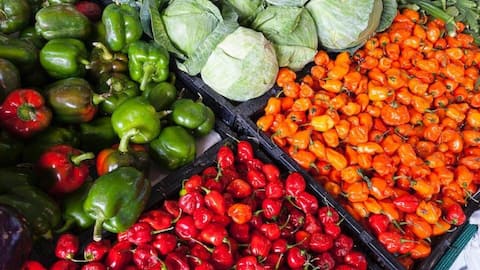Community-supported agriculture: Concept, benefits, and how it works
What's the story
In recent years, there has been a growing movement towards more sustainable and community-centered approaches to agriculture. One noteworthy model gaining traction is Community Supported Agriculture (CSA). This innovative system fosters a direct connection between farmers and consumers, redefining the way we source and appreciate our food. Let's explore the impact of community-supported agriculture in promoting sustainable practices and building stronger local communities.
Definition
Concept: Consumers as shareholders
Community-supported agriculture is a cooperative farming model where individuals, often referred to as "shareholders" or "members," invest in a local farm by purchasing a share of its produce. In return, shareholders receive a regular supply of fresh, seasonal fruits, vegetables, or other farm products. This arrangement establishes a direct relationship between consumers and farmers, creating a sense of shared responsibility and mutual support.
Process
Subscription model: How does it work
Consumers acquire a CSA share at the season's outset, providing farmers with essential upfront funds for seeds, tools, and inputs. In return, consumers receive periodic distributions of farm-fresh produce. Termed a membership, CSA shares differ in size and content but essentially offer a subscription-like model, ensuring a steady supply of locally sourced products either through pickup or delivery.
Benefits
Fresh and seasonal produce: The results
CSA members enjoy access to freshly harvested, nutrient-rich produce. Since the produce doesn't travel long distances, it retains more of its nutritional value compared to store-bought alternatives. In addition, CSAs provide consumers with the opportunity to embrace seasonal eating, bridging the divide between the farm and the plate. Consumers can also inquire directly about producers' growing practices, enabling informed choices aligned with their values.
Local farmers benefit
Benefits: Local farmers get financial support
CSA provides financial support to local farmers, helping them sustain their operations and make a living. Regular distributions of fruits, vegetables, meat, and other agricultural goods are made to consumers. This direct relationship cuts out intermediaries, ensuring that a larger portion of the investment goes directly to the farmers. Joining a CSA links you with like-minded consumers, providing involvement in a community-focused food system.
Countries following
Countries that have been doing community-supported agriculture
Since the 1980s, community-supported farms have emerged across North America, particularly in regions such as New England, the Northwest, the Pacific coast, the Upper-Midwest, and Canada. As of 2007, the United States Department of Agriculture reports a count of 12,549 located in the United States of America. CSA was introduced to China following a series of food safety scandals in the late 2000s.
